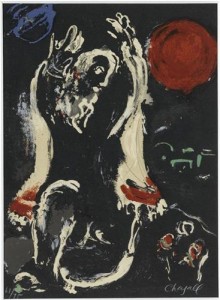Isaiah 50:4-9a
This text is used for the Lectionary Year C on March 20, 2016.

This is not your typical Palm Sunday text. We prefer the celebration. Children waving branches as Jesus, mounted on a donkey, rides into the holy city. We join the parade singing “Hosanna! Blessed is the one who comes in the name of the Lord!” The congregation knows Good Friday will happen before we meet again. But on this day, we prefer to celebrate, sing, and dance.
Perhaps, breaking tradition is healthy every so often. The unwritten question resonating in the background of the Triumphal Entry asks, “Will these same people worship the Jesus on the donkey, when he is hanging on cross?” “Will they identify with the suffering one, just as they celebrate the one who comes as a king?” “Will we?” These questions are where Isaiah 50 and the Triumphal Entry find common ground this Palm Sunday.
Isaiah 50 is in the second half of Second Isaiah, penned toward the end of the Babylonian Exile. King Cyrus of Persia has overcome Babylon’s dominance in the region and is establishing a new empire. Isaiah 50 contains the third of four “servant songs” in Second Isaiah, each offering a testimony of humility and hope in the midst of Israel’s recent trials and future unknowns. The servant behind the song could be the prophet or the nation as a whole. Either way, the message remains the same.
As those in captivity, the people of Israel have not known a place of power and independence for some time. The opening verses of Isaiah 50 reflect on what got them there: namely their sins and deafness to God’s call. God’s people like sheep had gone astray. In their place of exile, however, refinement has come, and the one who once turned his back on God instead proclaims, “I gave my back to those who struck me.” Turning toward God does not immediately release Israel from captivity and return them to a place of power and dominance. Rather, it teaches them to be a people steady in the face of suffering, humble in the midst of opposition, and hopeful when things continue to go another way. Those familiar with the servant’s path of suffering and opposition should not be surprised when Jesus turns from the palm covered streets of Jerusalem, and looks to the cross of Calvary. It is not surprising that God’s people are invited to find God in their sufferings, not apart from them. Nor is it surprising when the most powerful testimony on the lips of God’s people springs forth from the road marked with detours, blood, and bruises. What is surprising is that God is not only found on this road but that he would walk it himself for us.
With that, the preacher may choose to focus on the servant’s attitude in the midst of trials. It is starkly different from what we see in Jeremiah or much of Lamentations. The servant’s recollection of beatings, insults, and spitting are not offered as a form of lament at all, but as a song of confidence in spite of such grim circumstances. This response does not seek to understand or justify the pain, but simply resolves to endure in hope.
In a culture that feels entitled to always know why before proceeding, it might benefit the preacher and congregants to name some of the injustices, oppressions, and trials we cannot make sense of on our own. And with a need for explanations set aside, we can resolve to choose the way of hope, knowing the Suffering Servant Jesus’ painful journey to the cross also left many questions on the table until the moment of the resurrection. On Palm Sunday, we are not there yet. We are invited to lay down our need to understand everything and choose hope.
How is that possible? The servant in Isaiah 50 has “set [his] face like flint,” and knows he will not be put to shame. He is single-minded, a man of purpose, resting in and returning to the covenant promises of God. These words immediately bring us to Luke 9:51, where Jesus sets his face like flint to Jerusalem. The ultimate man of purpose, resolved to fulfill the covenant promises of God, undeterred by every trial and temptation that would try to keep him from it. What has been revealed is enough to call for our full intention, focus, and purpose. The need for explanations aside, the preacher might use Psalm 50 as an opportunity to share from his or her own heart, what he or she does know and from what he or she is resolved to never turn his or her back, no matter what may come.
The preacher could also note the turn of events, as verses 4-5 open quietly, with God’s servant describing himself as a teacher, called to sustain the weary, by hearing their cries. The servant is kind and compassionate; someone worth knowing. And yet, so quickly, he becomes the victim of brutality. What happened? Why would the world want to hurt one who seeks to uphold the weary and hear the needy? This seems scandalous, if we didn’t see it happening all the time. Those who speak up for the ones intentionally silenced by systems of power, those who name injustice in the presence of corruption, and those who hear what the comfortable prefer to ignore, have always walked a dangerous road. Old systems die hard. Power won’t go down without a fight. It only seems fitting that God’s servant must enter the darkest strongholds of human existence in order to break through them once and for all. Only God, and then the servants of God, would push against the temptation to meet violence with violence, and instead, would walk into the places of corruption, injustice, enslavement, and despair with a life that transforms from the inside out. Will the people of God, who are happy to wave their palm branches and sing to the Glorious King, also identify themselves with the suffering One? This is the driving question on Palm Sunday. This is the driving question of Isaiah 50. May the church wrestle with this question this day.
 Jamie McCallum
Jamie McCallum
Pastor
Belfair Community Church, Belfair, Washington
jamie@belfairchurch.com
Tags: suffering, suffering servant, non-violence, confidence

Splendid your item, very detailed.